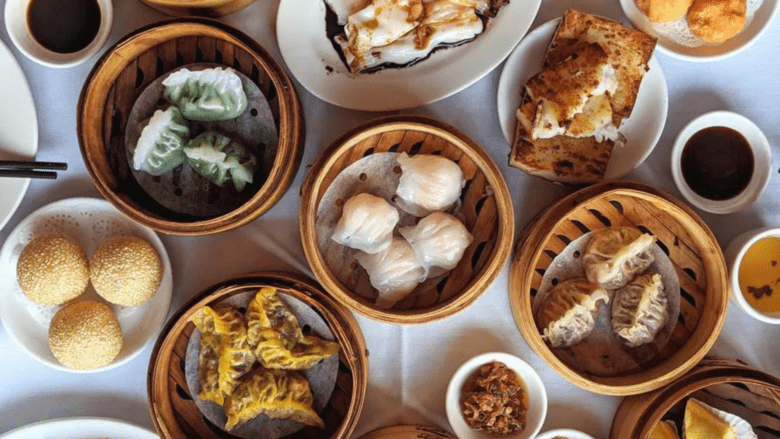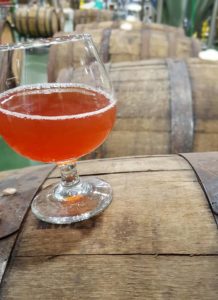
Sour is one of those words that often requires further investigation. It can mean delightfully tart, sweet and tangy, bracing and acidic—it can even be a synonym for “bad.” So when it appears in front of the word “beer,” some folks might raise an eyebrow. But sour beers have been around for a long time, and they’re back on the scene in a big way, jostling for fridge-space in local liquor stores and funking-up beer lists around the city and the world.
Like so many delicious things, sour beers originated in Europe. But recently, American brewers have been experimenting with the style, and the category is blossoming as a distinct challenger to the Gospel According to Hops that has dominated the craft beer world for so long. The great thing about sours is that, unlike a polarizing IPA (you either like ‘em or you don’t), they run the gamut from light and fruity to face-scrunchingly weird, meaning there’s something here for every palate, even those who “don’t like beer.”
Making a sour is a long process, requiring both commitment and risk—they require bacteria and microbes to achieve that puckery profile, but if not properly contained, those little critters can contaminate a brewery’s entire operation. But the results can be captivating, and the category’s most zealous converts are always on the lookout for the newest, funkiest, weirdest brew on the market. So if you’re feeling adventurous, or just want something a little different to sip on as summer turns to fall, here is a brief primer on the world of sour beer and a few you can look for locally.
Berliner Weisse
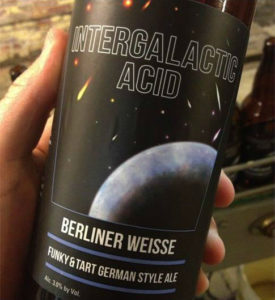 Hailing from its namesake hometown, Berliner Weisse was once the most popular beer in Berlin. A light white beer, Berliner Weisse utilizes Lactobacillus bacteria to create a straightforward, super-tart flavor (science is delicious!). It was traditionally served with flavored syrups to balance the sourness, but a current trend with these beers is to brew them with fruit—basically a crafty shandy. A fun fact about Berliner Weisse is that it’s traditionally super low in alcohol (around 3%), which makes it a refreshing and crushable option on a summer day.
Hailing from its namesake hometown, Berliner Weisse was once the most popular beer in Berlin. A light white beer, Berliner Weisse utilizes Lactobacillus bacteria to create a straightforward, super-tart flavor (science is delicious!). It was traditionally served with flavored syrups to balance the sourness, but a current trend with these beers is to brew them with fruit—basically a crafty shandy. A fun fact about Berliner Weisse is that it’s traditionally super low in alcohol (around 3%), which makes it a refreshing and crushable option on a summer day.
There are quite a few Berliner Weisse-style beers being brewed locally, and their simple sour-candy tartness makes them a great first foray into the category. The Tap Brewing Co. in Haverhill makes the irreverent, super-sour Intergalactic Acid (currently available in the can at Eastern Standard). Another local player making a big splash in the sour game is White Birch Brewing out of Hooksett New Hampshire, with blueberry and raspberry Berliners that you don’t want to miss. Look for those on beer lists and in local liquor stores (or take a field trip to the brewery!)
Gose
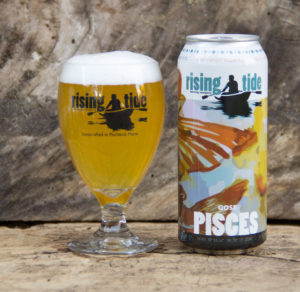 Pronounced “GO-seh,” Gose is another German sour staple hailing from Goslar, in the same family as Berliner Weisse. This top-fermented wheat beer has been brewed since the 1500s, and also uses Lactic acid bacteria to achieve its citrusy pucker. What sets this style apart is the addition of coriander and salt, giving gose a savory and herbaceous profile. Still low in alcohol, hovering under 5%, these beers are highly quaffable, but they hide a little more complexity behind the satisfying sourness than their pals from Berlin.
Pronounced “GO-seh,” Gose is another German sour staple hailing from Goslar, in the same family as Berliner Weisse. This top-fermented wheat beer has been brewed since the 1500s, and also uses Lactic acid bacteria to achieve its citrusy pucker. What sets this style apart is the addition of coriander and salt, giving gose a savory and herbaceous profile. Still low in alcohol, hovering under 5%, these beers are highly quaffable, but they hide a little more complexity behind the satisfying sourness than their pals from Berlin.
Rising Tide Brewing Co. out of Portland, ME, makes their Pisces Gose with local seawater instead of adding salt (you can find it in a can at Townsman downtown). Anderson Valley Brewing Company isn’t exactly local, hailing from Booneville, CA, but they’re big in the gose-game and their beers are available all over. You can find funky renditions like their Briney Melon Gose behind the bar at The Lower Depths in Kenmore.
Lambic
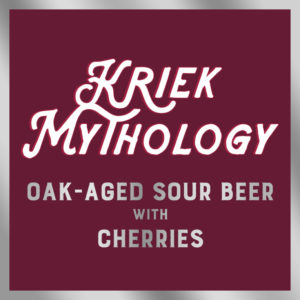 Lambics are wild—literally, they’re left to ferment in the open air in Belgium and utilize whatever wild yeasts might be floating around, as opposed to the meticulous and controlled fermentation process most brewers insist upon. This gives Lambic its distinct, cidery-sour finish. Lambics can get super funky—they’re fermented in open-topped port or wine barrels and often left for a number of years to develop—and they come in a variety of styles (Geuze, Kriek, Faro), most often blending beers of different ages to achieve a desired effect, and sometimes using fruit like strawberries and cherries in the process.
Lambics are wild—literally, they’re left to ferment in the open air in Belgium and utilize whatever wild yeasts might be floating around, as opposed to the meticulous and controlled fermentation process most brewers insist upon. This gives Lambic its distinct, cidery-sour finish. Lambics can get super funky—they’re fermented in open-topped port or wine barrels and often left for a number of years to develop—and they come in a variety of styles (Geuze, Kriek, Faro), most often blending beers of different ages to achieve a desired effect, and sometimes using fruit like strawberries and cherries in the process.
Lambics are at the top of the sour-nerd food chain when it comes to desirability, and because they take so long to make they’re a little harder to find. Cantillon Brewery is one of the crown-jewels of the Lambic scene, making some of the sourest, most sought-after, and gnarliest brews on the market. This stuff definitely won’t be in the cooler next to the 30-racks, so check out places with serious beer lists or ask the guru at your local craft brew purveyor. For a local riff on the style, check out Springdale Barrel Room’s Kriek Mythology, a Belgian-style sour from the team behind Jack’s Abby brewed with cherry skins and aged for 10 months in oak.













